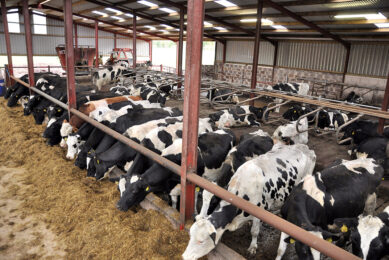Dairy-free: Is it really what consumers want?

Almonds, peas, oats and hemp. It seems that all of it is turned into drinks these days. The trend of these dairy-free beverages means competition for the dairy sector, although this space also faces some challenges, according to Rabobank experts in a new report.
The supply of dairy-free products has been growing over the last years. Think of almonds, peas, soy, oats, barley, hemp and flax that hit the supermarket shelves in fancy packages. Not long ago, these products were even called milk (as in ‘almond milk’). However, the European Commission decided in 2017 to that this is confusing and leads to damage for the dairy industry and voted that the terms, milk, butter and cheese can not be used for dairy-free products. Nevertheless, the dairy alternative space is bound to continue to develop and move in response to consumer demands.

People believe it is healthier
The single largest factor driving consumers to choose dairy-free is a shift in perception of consumers who believe dairy-free is better for them. These same consumers trust their peers and other influences over professionals, according to multiple studies. It is mostly millennials and the Generation Z that choose dairy-free products. Their perceptions of health and sustainability (including animal welfare and environmental footprint) are core motivators for their choice to limit dairy consumption. Rabobank finds it surprising however, that price and taste are not found to be incentives for consumers to leave dairy. However, they are leading variables among purchasing decisions within dairy alternative categories. More specific health-related concerns such as lactose intolerance and milk allergies also play a role in the growth of dairy alternatives. At the same time, misperceptions of intolerance and allergies are increasing. This is also seen with gluten for example.
Dairy companies entering dairy-free space
At the same time, we see that dairy companies also move into the space of dairy-free products. Last year, Danone completed a cross-continental acquisition of WhiteWave, a leading company in dairy alternatives. Before, WhiteWive belonged to Dean Foods. According to Danone, this acquisition will bring them synergies in combining the global supply chain and technology from Danone with the product portfolio of WhiteWave. In Finland, Valio, the largest dairy cooperative, recently launched OddlyGood, a range of oat-based products. It was launched in Finland and Sweden. Investment interest is growing in the Asia-Pacific region, the world largest dairy alternative market. In 2011, Nestlé announced it has signed an agreement with Yinly, a manufacturer of peanut-based beverages in China. Inner Mongolia Yikli, China’s largest dairy manufacturer, also enters the plant beverage market with its brand ‘Yili Walnut Milk’ drink in 2013.
But what is really healthy then?
Although the demand is increasing for dairy alternatives and people think it is an healthier option over normal milk, the dairy-free market has a few challenges to tackle. This could make this sector vulnerable in the next decade. According to multiple studies, plant-based alternatives do not perform as well as conventional dairy products in taste tests, hence alternatives seek to match the taste of milk. They are also less nutrient-dense, cost more than conventional dairy products and are highly processed, with lengthy comparative ingredient lists. Only soy-based alternatives have comparable protein content, while other alternatives have a relatively lower protein content (Figure 1). Thus, improving protein quality and quantity is a major challenge. The retail price of dairy alternatives is another hurdle to overcome. The price of the alternatives are typically nearly 2 times higher than dairy in the US and Europe.
How can the diary sector respond?
The consumers want the dairy-free products. So how can the dairy sector respond? According to how Rabobank, the traditional dairy players have many ways in which they may respond to this. First of all, it is important that dairy companies keep on focusing to find a home for their milk. The idea of investing in a non-dairy activities can cannibalise dairy products. At the same time, investing in non-dairy could provide farmer-members a diversity in their farming operations and income streams. Product innovation offer another, possibly less controversial, opportunity for the dairy sector. There is potential in developing products which may be a combination of dairy and plant ingredients.
[Source: Rabobank]
Join 13,000+ subscribers
Subscribe to our newsletter to stay updated about all the need-to-know content in the dairy sector, two times a week.










